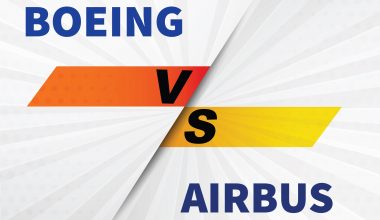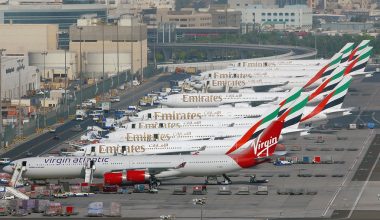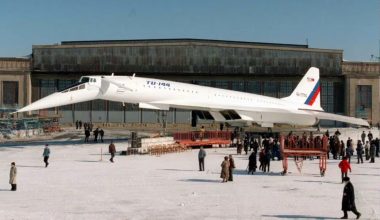What is reverse thrust?
There are three main components responsible for slowing down the aircraft which are brakes, reverse thrust and ground spoilers. Reverse thrust is a technique used to slow down the aircraft on the runway after touchdown. The turbine output is projected into reverse direction and thrust is applied to enhance braking action.
[the_ad id=”28989″]At touch down, the flaps known as reversal doors open up in a jet aircraft. Acting as a guiding wave at middle section of the bypass channel of the turbine, such doors force the accelerated air of the fan into the opposite direction.
The reverse thrust doesn’t act automatically after touch down. So, the small levers next to engine thrust levers must be lifted up. The small levers activate the hydraulic systems to apply pressure to actuator which then opens reversal doors.
These positions of levers produce idle reverse. The engine will spool up if the thrust levers are moved to aft position due to which more thrust is produced and reverse output is boosted. The engine will increase thrust up to seventy percent at initial which then resembles in full reverse thrust.
The reverse thrust significantly reduces the landing distance however; it varies with aircraft weight and environmental factors. Idle reverse after touchdown is made mandatory by most of the aircraft manufacturers and airlines for the reasons that it immediately decreases aircraft speed and stabilizes the aircraft’s roll out. Also the reverse thrust reduces brake usage.
In a snow conditioned runway, reverse thrust is vitally effective because it decelerates the aircraft and also prevents it from skidding.
Airplanes with wing-mounted engines may only use full reverse thrust until slowing down specified speed because using the reverse thrust below that speed could blow up loose gravel on the runway. The gravel could be sucked by the engine causing damage to the turbine. For instance; In an Airbus A320, full reverse is reduced to idle at the speed of 70knots and reverses are retracted below 40 knots.
Propeller driven aircraft produce reverse thrust by varying the angle of propellers. The controllable-pitch propellers are adjusted in order that they project thrust forward.





